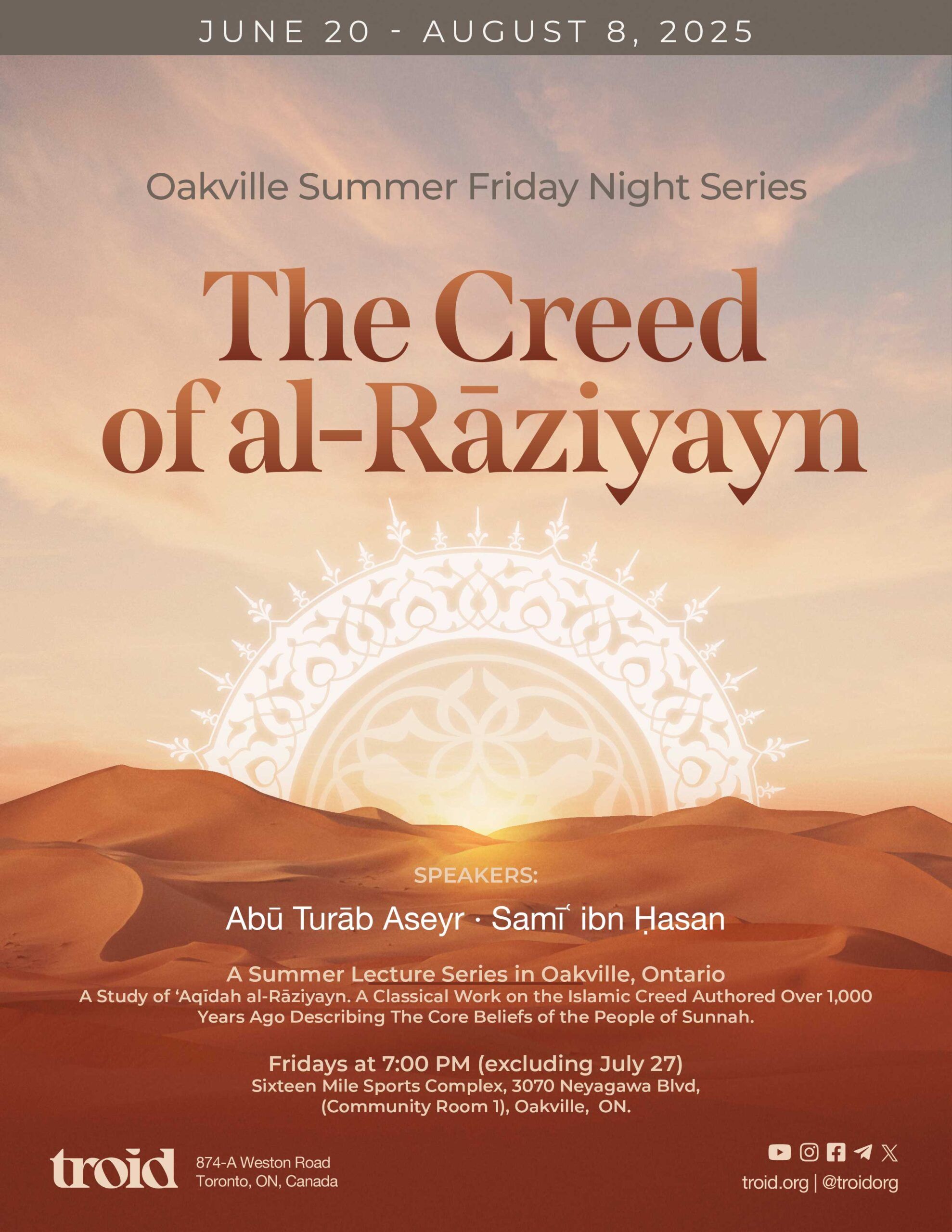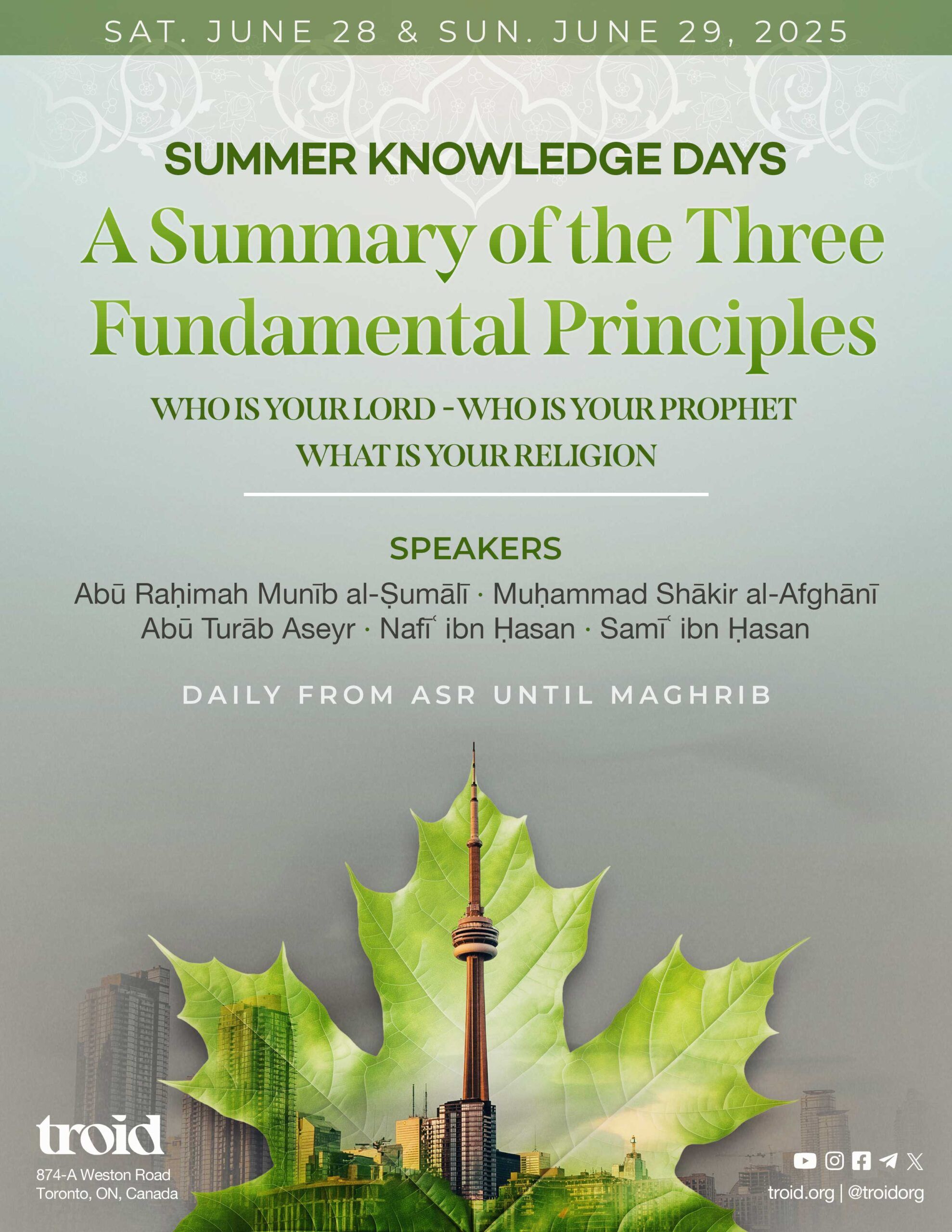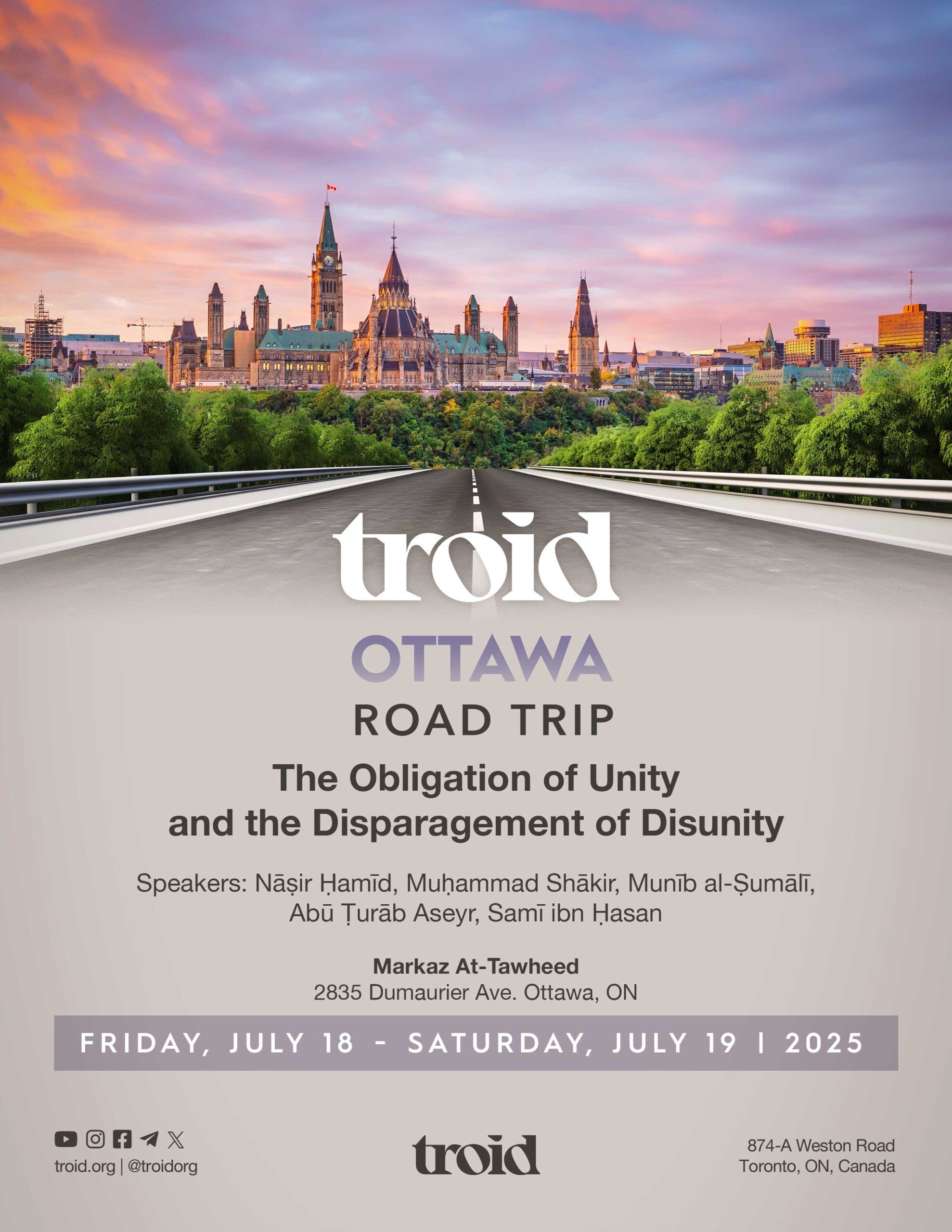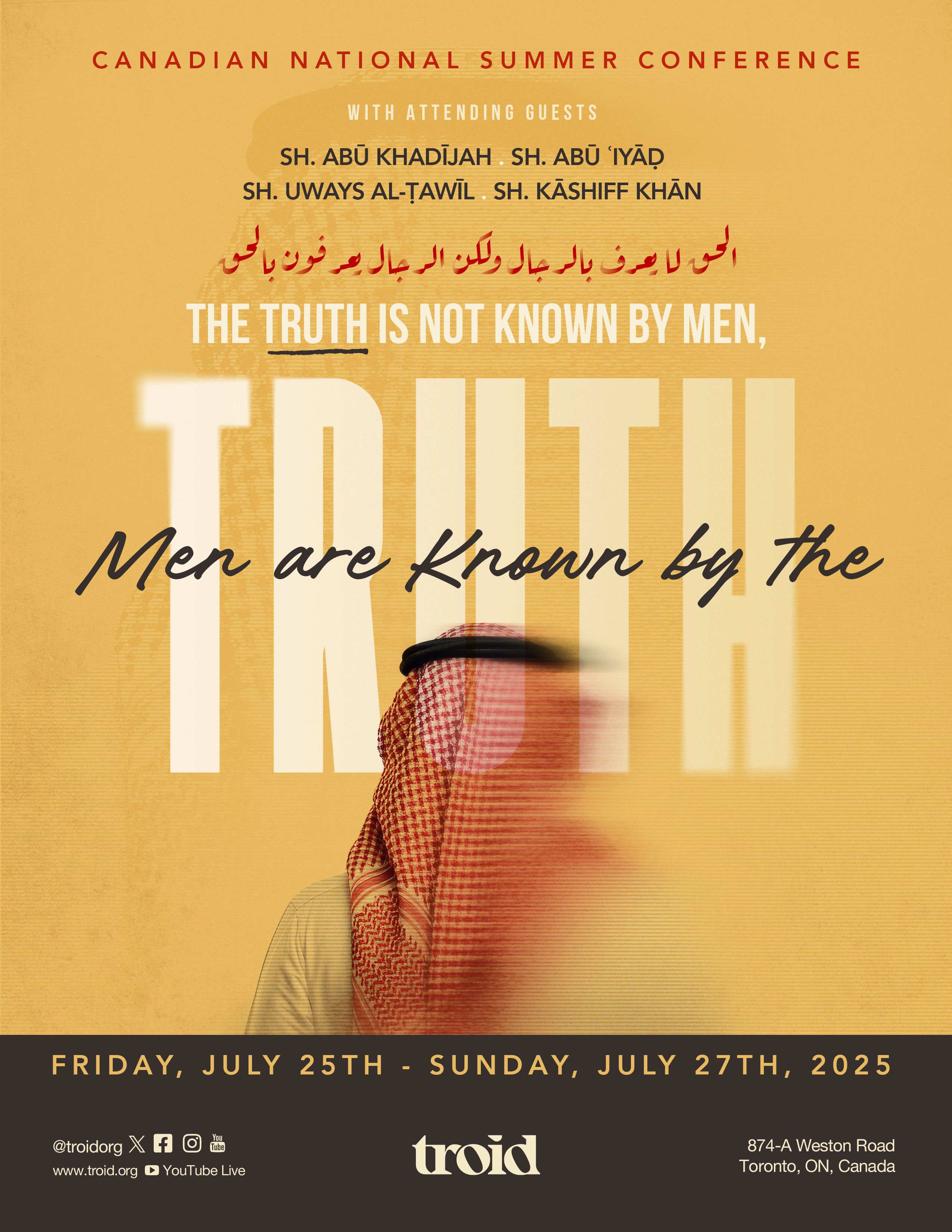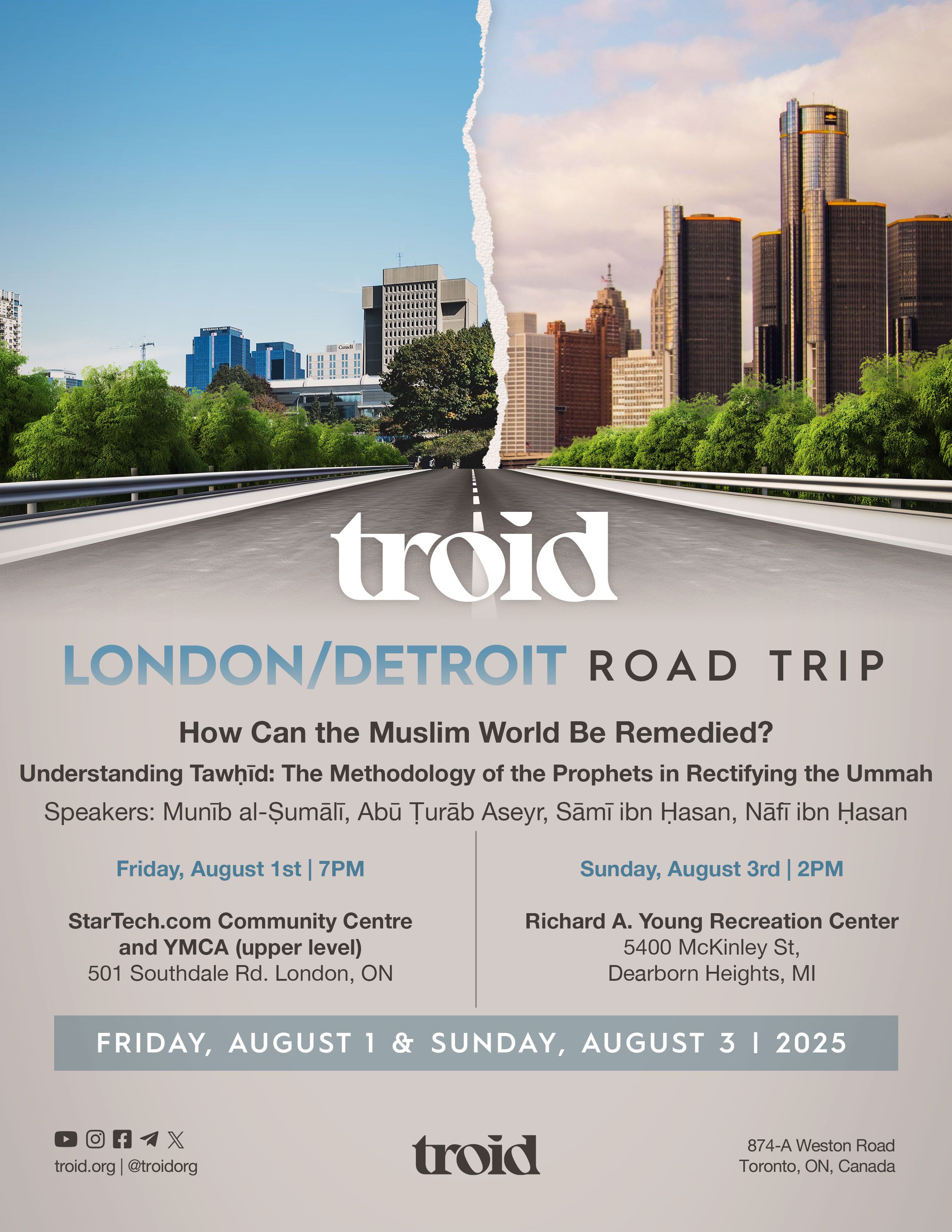Ḥadīth Sciences Course: The Types of Ḥadīth
Shaykh Mūsá Richardson
10 interactive lectures that focus on the sciences of Ḥadīth, the second source of our Legislation in Islām. Each lesson is filled with benefits explained in an effortless manner and translated to fine English. Little essence of the actual science is lost, thus rendering the lessons indispensable to both the beginner and advanced student.

Review:
A set of Islamic Courses at educating the Muslims about core aspects of their religion. July 11th-Aug. 17th, 2007 at TROID, Toronto. Abū al-ʿAbbās Mūsá Richardson is an American Post-Graduate Student from Umm al-Qurá University in Makkah, Saudi al-ʿArabīa. His works are available in-print with TROID Publications and online at www.bakkah.net/en.
Ḥadīth Series: The Ḥadīth course introduces basic terminology in Ḥadīth Sciences such as the ṣaḥīḥ and ḥasan ḥadīth, their conditions as well as broken chains and the associated terms and rules. A good primer for the student who wishes to have a firm introduction to the science of ḥadīth.
- The First Lesson discusses the importance of the sciences of ḥadīth, the differences and similarities between it and the Qur’anic sciences. The Professor, may Allāh be pleased with him, explains what mutawātir narrations are, mentioning in the process some titles that have been authored in such a subject, e.g. al-Durar al-Mutanāfirah by as-Suyootee. However, he goes on to explain that the mutawātir narrations are only a small fraction compared to the āhād narrations that exist, which is the main focus of the course. He mentions who the great critics of chains and narrators were, such as: al-Bukhārī [d. 265H] and Muslim [d.261H]. Both their books are considered to be Ṣaḥīḥ, as they only intended to collect the authentic narrations. The Professor, may Allāh reward him with good, then explains what the Ṣaḥīḥ narrations are in detail, and the Five relevant conditions that they must meet. They have been mentioned in the Bayqūniyyah poem, which the teacher recites and then breaks down.
- The Second Lesson begins with a review of the past lesson. Why do we study the science of ḥadīth? What is our objective in doing so? Had it not been the for the isnād (chain), everyone would have said what he wanted to say. He explains that during the time of the tabi’een, they were reliable people, but some people of bidʿah began to appear and falsely attribute statements and actions to the Prophet, may Allāh raise his rank and grant him peace, so a need to differentiate between authentic and weak chains was recognized. The technical science of ḥadīth means to sort out what the Prophet, may Allāh raise his rank and grant him peace, said from what he did not say; what he did from what he did not do; and what he approved of from what he did not approve of; and attributes that he had from those that he did not have. The Professor goes on to introduce the Ḥasan ḥadīth and its Five Conditions.
- The Third Lesson is an excellent workshop and interactive lesson between the students and the teacher.
- The Fourth Lesson introduces the ḍaʿīf ḥadīth. Technically, this denotes the weakness of a narrator, the weakness of a broken chain, the weakness of a mukhālafah, or it could denote a lack of ‘adaalah. The Professor points out that it is important to differentiate between a ḍaʿīf ḥadīth and a ḍaʿīf jiddan ḥadīth, the main difference of which is, the latter ḥadīth is not considered at all, and it cannot strengthen another narration, whereas the former can be considered even though we do not act upon nor affirm it till we find proof to do so. Other forms of narrations, such as al-mawdoo’, ḥasan li ghayrihi and ṣaḥīḥ li ghayrihi are discussed very nicely.
- The Fifth Lesson is another excellent workshop that shows how one chain can strengthen another.
- The Sixth Lesson describes narrations with broken chains, namely: munqati’, muʿdhal, and mursal. Al-Munqati’, for example, has two usages according to the scholars of ḥadīth. The first of the two usages is that it applies to any ḥadīth with a broken chain (i.e. a narrator in the chain relates from someone he did not meet or take the ḥadīth from, whether the narrators are missing at the beginning of the chain or the end of the chain). No matter how it comes, that is all generally referred to as al-Munqati’. The second usage, while more specific, will not be entirely understood until the appropriate ḥadīth terms are studied. The explanation of the al-munqati’ ḥadīth is followed by an explanation of al-muʿdhal and al-mursal narrations.
- The Seventh Lesson is a continuation of the sixth lesson, with a practical implementation.
- The Eighth Lesson introduces new terms to describe aḥādīth that do not directly relate to authenticity or the lack thereof. The marfūʿ’ and mawqūf, and maqtūʿ are three terms that describe where the chain ends up. The ʿālī and the najzil ḥadīth are also studied.
- The Ninth Lesson is about the musalsal ḥadīth (repetitive transmission).
- The Tenth Lesson is a review session.

